The Most Common Types of Rodents in Virginia and Maryland

Homeowners in Virginia and Maryland often deal with rodent problems throughout the year. The most common rodents in this region include house mice, Norway rats, roof rats, voles, squirrels, and more. These pests can invade homes and yards in search of food, warmth, and shelter — leading to property damage, contamination, and health risks.
House Mouse (Mus musculus)

The most common rodent seen scurrying through homes in Virginia and Maryland is the house mouse. These tiny, grey or brown rodents are often drawn to human habitats due to easy access to food and warmth. House mice are excellent climbers and can squeeze through holes as small as a dime, making it incredibly easy for them to invade your space.
What Do House Mice Look Like
- Size: About 2.5 to 4 inches long (excluding the tail).
- Color: Usually light brown or gray with lighter underparts.
- Tail: Long, thin, and nearly hairless, approximately the same length as the body.
- Ears: Large and rounded, often larger in proportion to its head.
- Eyes: Small and black, with a prominent bulging appearance.
- Whiskers: Long and prominent.
- Behavior: Known for being inquisitive and can squeeze through very small openings.
Where You'll Find House Mice
House mice are typically found in basements, attics, kitchens, and inside walls. They love to nest in warm, hidden areas, and if left unchecked, they can quickly multiply.
Norway Rat (Rattus norvegicus)
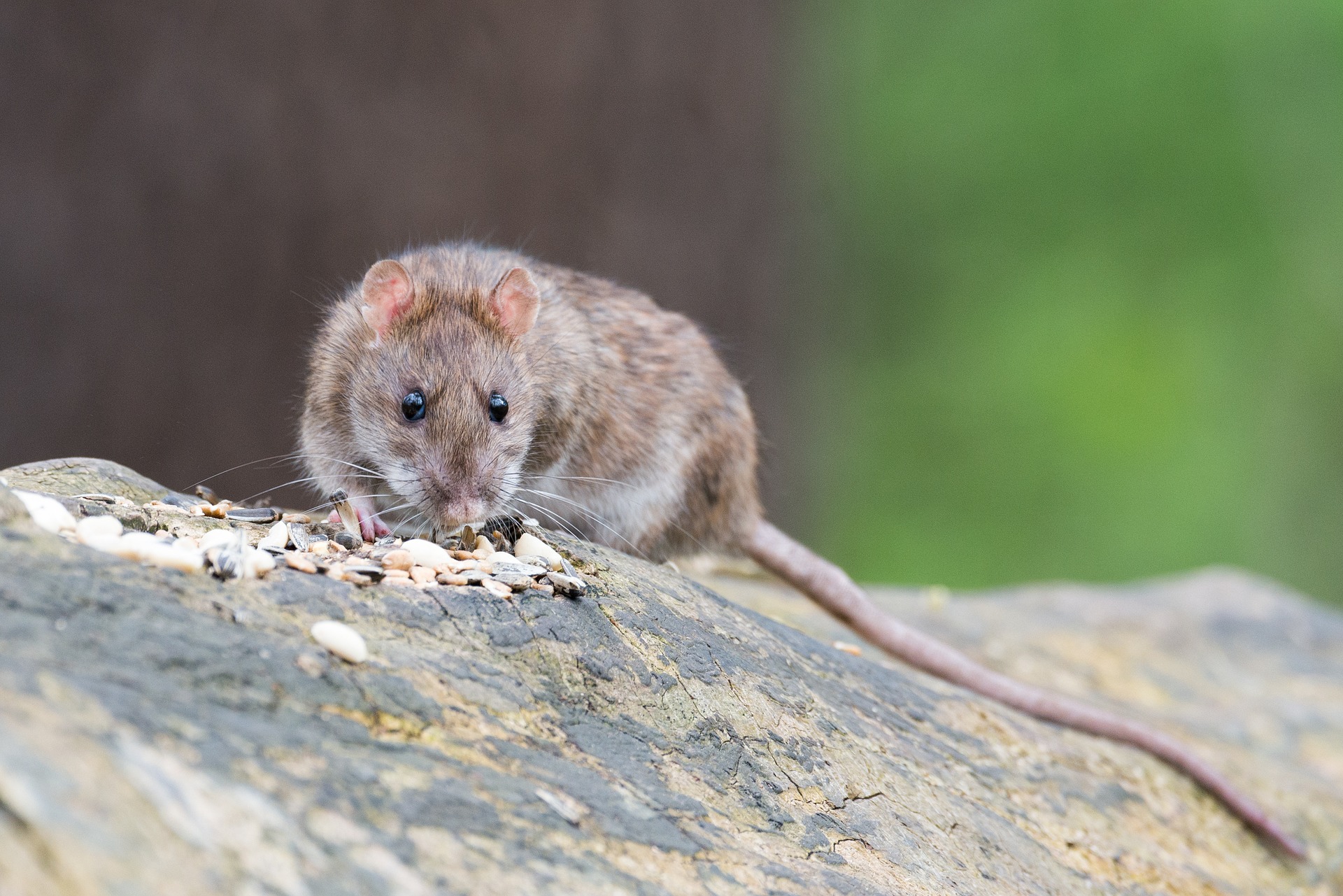
Another common rodent in the region is the Norway rat, often referred to as the "sewer rat." These larger, burly rodents are typically brown or grey and can grow up to 16 inches long, including their tail. They prefer lower levels of the home, like basements, crawl spaces, or garages, and tend to be nocturnal, hiding during the day.
What Do Norway Rats Look Like
- Size: 7 to 9.5 inches long (excluding the tail).
- Color: Brown or gray with a lighter underbelly; some may appear reddish.
- Tail: Shorter than the body, covered in scales, and thicker than a house mouse's tail.
- Ears: Smaller in proportion to its head, covered in fur.
- Eyes: Small and beady, set close to the snout.
- Whiskers: Long and noticeable.
- Body: Stout and robust; they have a blunt snout and a heavyset appearance.
Where You'll Find Norway Rats
Norway rats build burrows around building foundations, under piles of debris, and in basements. Their burrows can sometimes damage foundations and other structures around your home.
Roof Rat (Rattus rattus)
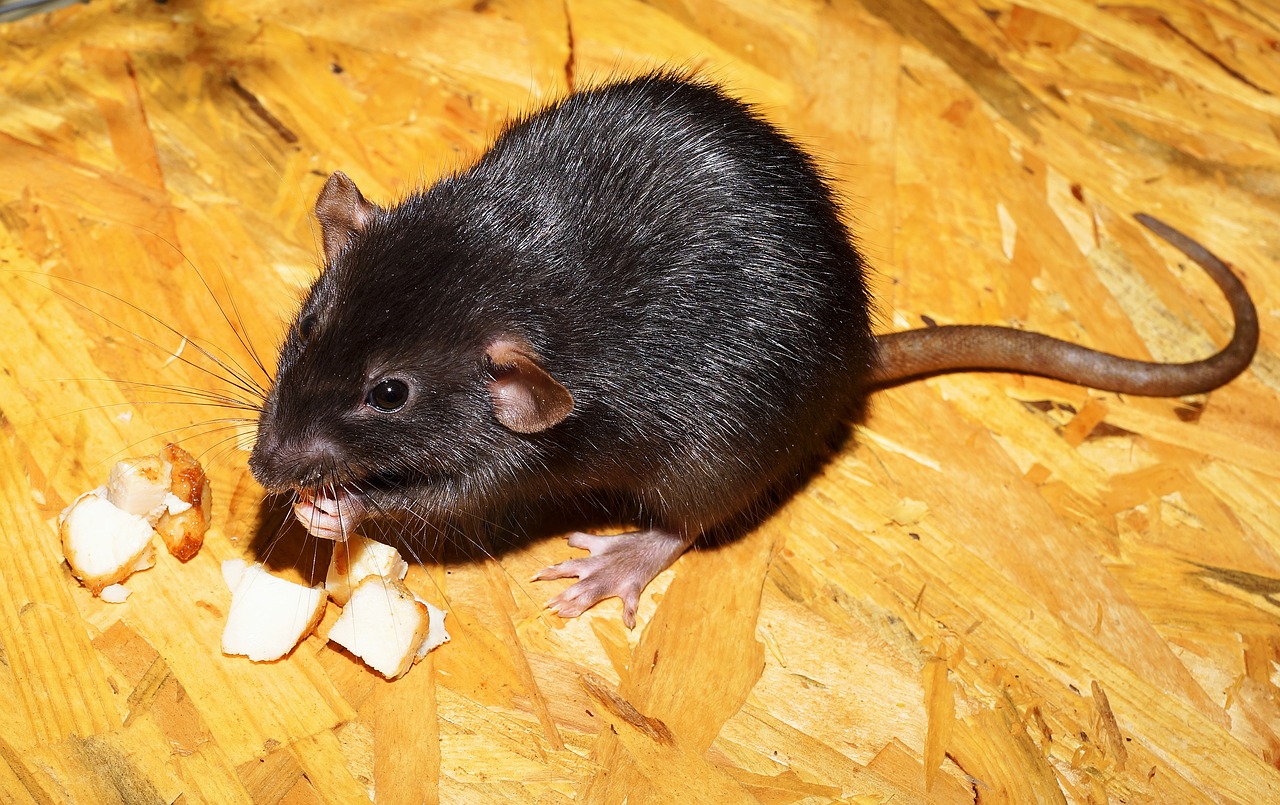
While Norway rats prefer ground-level locations, roof rats are the climbers of the rodent world. These sleek, black or dark brown rats are more common in coastal areas, making them a frequent problem in Maryland’s eastern shore and parts of Northern Virginia. Roof rats are smaller and more agile than their Norway cousins, often nesting in higher areas like attics, ceilings, or tree canopies.
What Do Roof Rats Look Like
- Size: About 6 to 8 inches long (excluding the tail).
- Color: Typically dark brown or black with a lighter belly.
- Tail: Longer than the body, slender, and hairless.
- Ears: Large and prominent, similar in size to the house mouse's.
- Eyes: Large and bulging, providing excellent night vision.
- Whiskers: Long and sensitive.
- Body: Slim and agile with a pointed snout, often found in higher places like attics.
Where You'll Find Roof Rats
Roof rats can enter homes by climbing trees or using utility lines to access rooftops. Once inside, they typically make their nests in attics, rafters, or ceilings.
Field Mouse (Apodemus spp.)

Field mice, also known as deer mice, are primarily outdoor rodents but can occasionally make their way inside, especially during colder months. These small rodents are brown with white underbellies and can be found more frequently in rural or suburban areas near fields or forests.
What Do Field Mice Look Like
- Size: Approximately 3 to 4 inches long (excluding the tail).
- Color: Brown or grayish-brown with a lighter underside.
- Tail: Almost as long as the body, thin, and covered in hair.
- Ears: Relatively large and rounded.
- Eyes: Small and dark, giving a beady appearance.
- Whiskers: Long and prominent.
- Behavior: Often found in fields or grasslands; they have a more rounded face compared to house mice.
Where You'll Find Field Mice
They typically prefer garages, sheds, or barns, but if they find a way into your home, they'll often nest in basements or attics.
Cotton Rat (Sigmodon spp.)
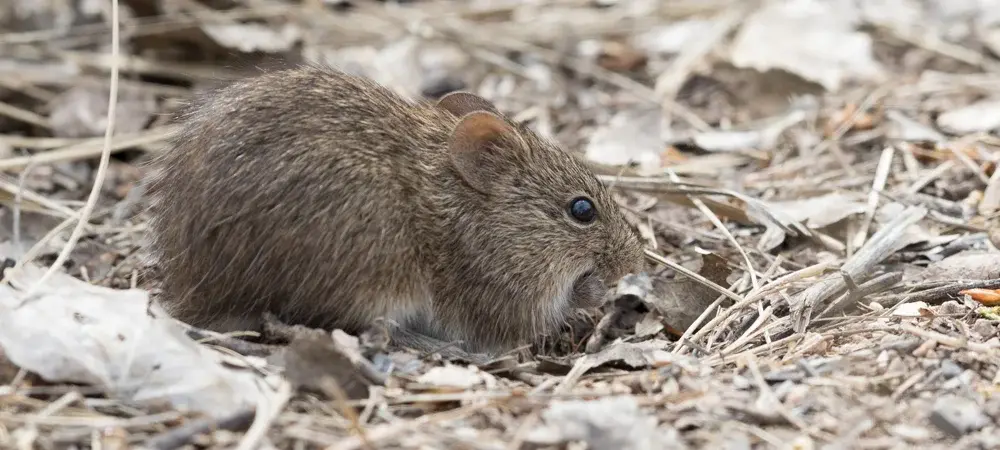
The cotton rat is a lesser-known rodent in Virginia and Maryland, often found in grassy or weedy areas. These robust creatures can vary in color from brown to grey and have a stout body with short tails. While they prefer to remain outdoors, cotton rats may occasionally venture into basements or crawl spaces in search of food.
What Do Cotton Rats Look Like
- Size: Approximately 6 to 12 inches long (excluding the tail).
- Color: Generally light to dark brown or grayish, with a paler underbelly.
- Tail: Short and stubby, about one-third the length of the body; covered in fine hairs.
- Ears: Small and rounded, not very prominent.
- Eyes: Small and dark, not as pronounced as in some other rodents.
- Body: Stout and robust with a broad, short head and a thick neck.
- Behavior: Often found in grassy fields, marshes, and around agricultural areas; they tend to be more secretive and are active both day and night.
Where You'll Find Cotton Rats
Cotton rats are usually found in fields, gardens, and areas with dense vegetation. They dig burrows and build nests in tall grass or brush piles but can enter homes through openings in the foundation.
Vole (Microtus spp.)
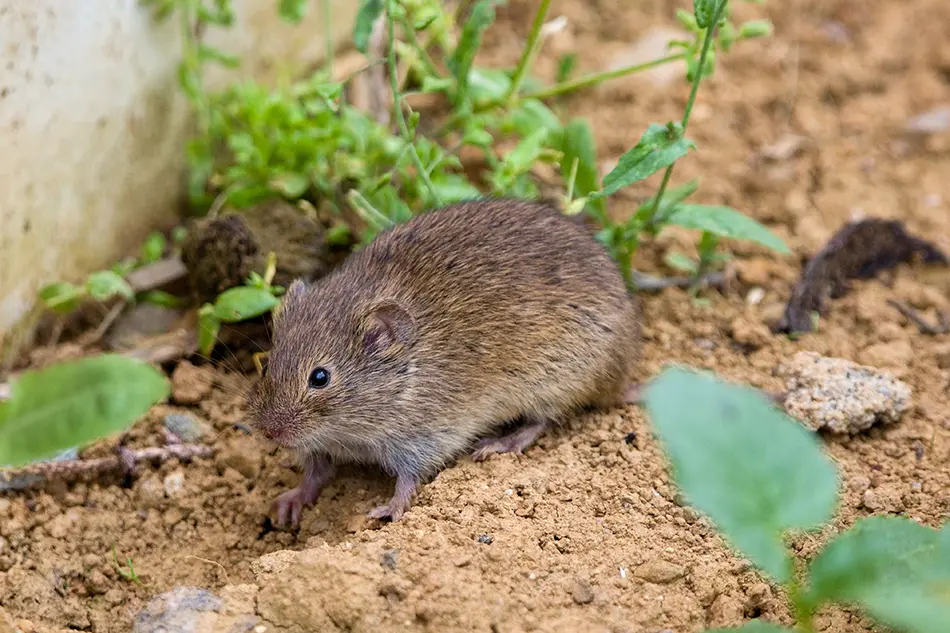
Voles are often mistaken for mice or rats, but these chunky, ground-dwelling rodents are notorious for causing havoc in gardens and lawns across Virginia and Maryland. Voles typically stay outside but can occasionally wander into basements or crawl spaces.
What Do Voles Look Like
- Size: Ranges from 4 to 10 inches long, depending on the species.
- Color: Typically brown or gray, with a lighter underbelly.
- Tail: Shorter than the body, stubby, and covered in fur.
- Ears: Small and partially hidden by fur.
- Eyes: Small and less prominent compared to other rodents.
- Body: Stocky and robust, with a short snout and a more rounded shape.
Where You'll Find Voles
Outdoors, voles burrow under lawns and gardens, causing unsightly damage to plants and vegetation. They dig shallow tunnels just beneath the surface, leaving visible tracks across the yard.
Eastern Gray Squirrel (Sciurus carolinensis)
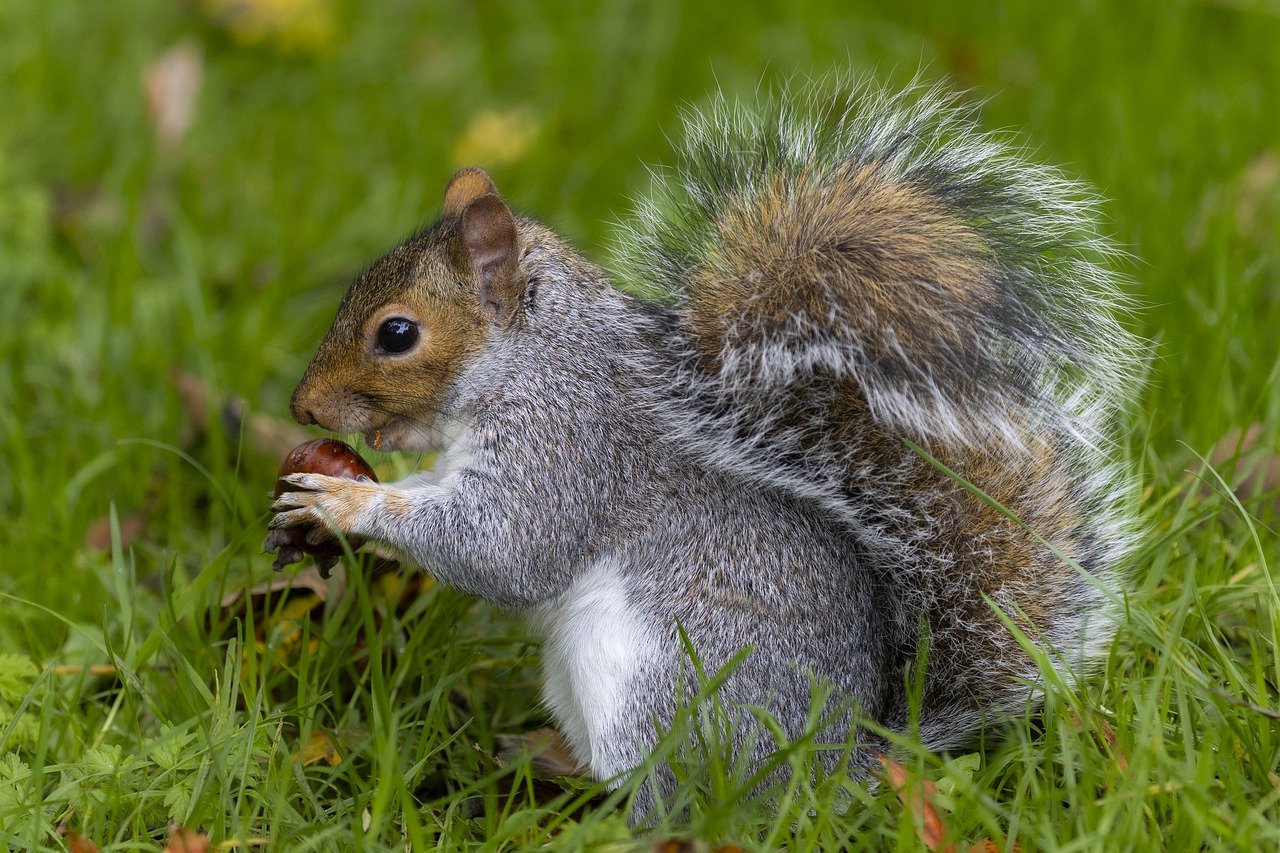
The Eastern gray squirrel is one of the most familiar and prevalent species of squirrels in Virginia and Maryland. Characterized by its bushy tail and gray fur, this agile rodent is often seen scampering through yards and parks. While primarily an outdoor animal, they can sometimes invade attics and other parts of homes.
What Do Eastern Gray Squirrels Look Like
- Size: About 16 to 20 inches long, including the bushy tail.
- Color: Grayish-brown fur with a white belly; color can vary in different regions.
- Tail: Long, bushy, and often larger than the body; used for balance and warmth.
- Ears: Medium-sized with tufts of fur.
- Eyes: Large and dark.
- Body: Agile with strong hind legs, well-adapted for climbing.
Where You'll Find Eastern Gray Squirrels
Eastern gray squirrels typically nest in trees or in attics if they can gain access. They prefer areas with plenty of oak, hickory, and walnut trees, as these provide food and nesting sites.
Learn how to get rid of squirrels in your attic.
Fox Squirrel (Sciurus niger)
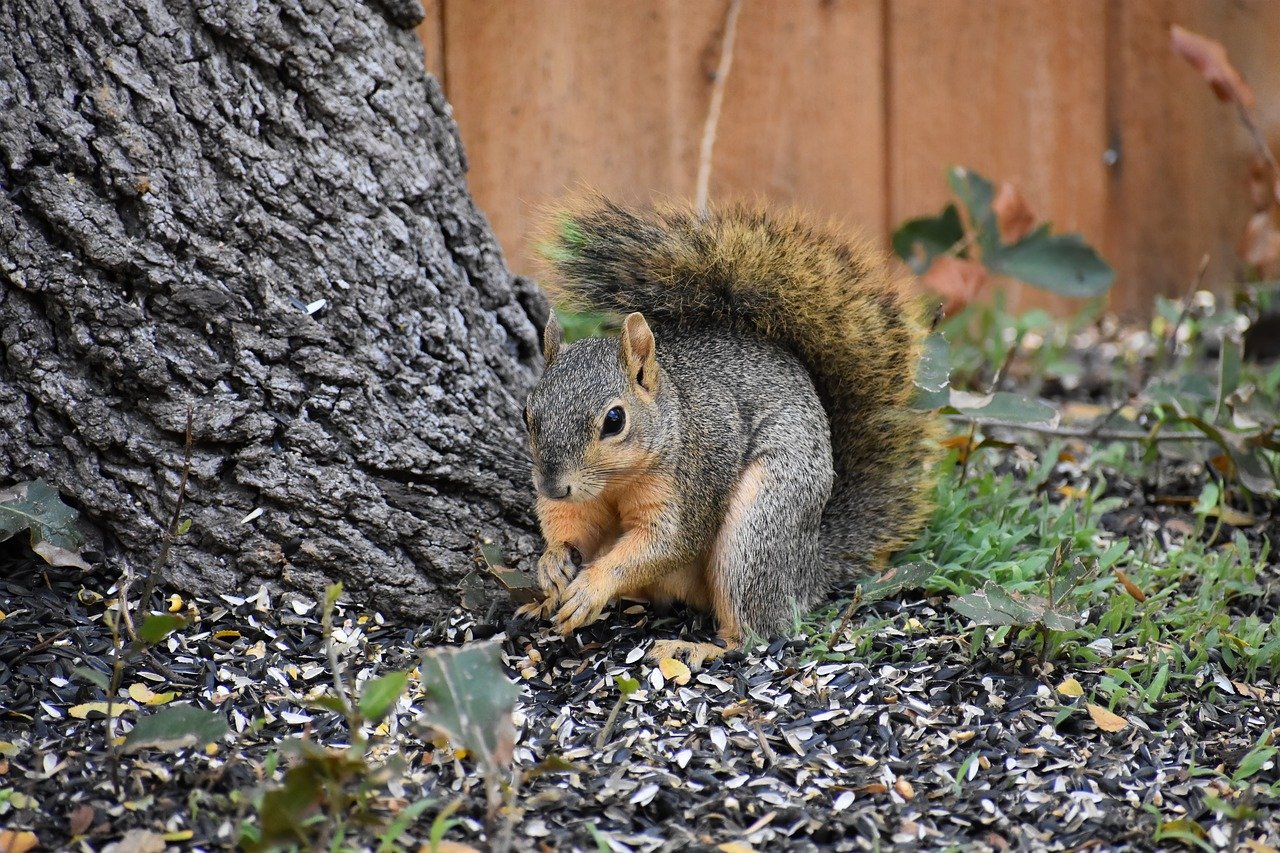
The fox squirrel is another common species in Virginia and Maryland, larger than the Eastern gray squirrel and recognizable by its rusty-orange fur and bushy tail. They are typically found in wooded areas, fields, and urban parks but can sometimes invade residential spaces.
What Do Fox Squirrels Look Like
- Size: Approximately 18 to 27 inches long, including the tail.
- Color: Reddish-brown to gray with a white belly; can have varied color patterns.
- Tail: Long, bushy, and often more colorful than the Eastern gray squirrel’s tail.
- Ears: Slightly tufted and medium-sized.
- Eyes: Large and dark.
- Body: Stockier than the Eastern gray squirrel, often found in open woodlands and parks.
Where You'll Fox Squirrels
Fox squirrels prefer mature forests with a mix of trees and open fields, but they will venture into urban areas where food sources are abundant. They often build nests in trees or can invade attics for shelter.
Flying Squirrel (Glaucomys spp.)
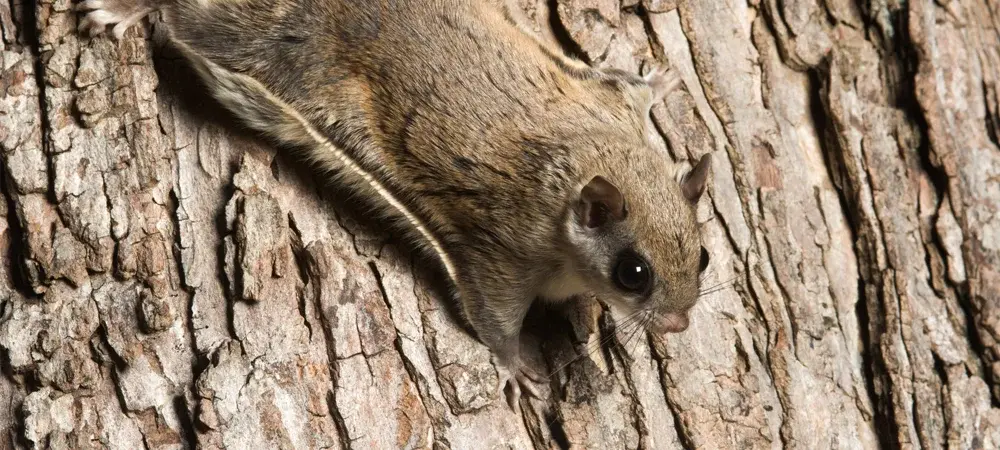
The flying squirrel is a unique species native to the region, known for its ability to glide through the air thanks to a special membrane that extends from their wrists to their ankles. These nocturnal creatures are often more difficult to spot but can invade homes in search of food and shelter.
What Do Flying Squirrel Look Like
- Size: About 9 to 10 inches long (excluding the tail).
- Color: Grayish-brown with a lighter underside; the fur is soft and velvety.
- Tail: Long and bushy, used for balance during gliding.
- Ears: Large and round, with no fur tufts.
- Eyes: Large and dark, adapted for night vision.
- Body: Flattened body with a membrane stretching from the wrists to the ankles, allowing them to glide between trees.
Where You'll Find Flying Squirrels
Flying squirrels typically nest in tree cavities or attics. They are social animals and often live in small groups, making them more likely to create noise in your home.
When to Call a Rodent Professional
While DIY methods can be helpful for minor rodent problems, larger infestations can be difficult to manage without expert help. If you’re noticing frequent rodent sightings, large amounts of droppings, or signs of damage, it may be time to call in a pest control professional, such as Century Termite & Pest Control. Our licensed rodent control experts are familiar with the local rodent species in Virginia and Maryland and can identify entry points, remove rodents, and help prevent future infestations. Contact us to learn more!
